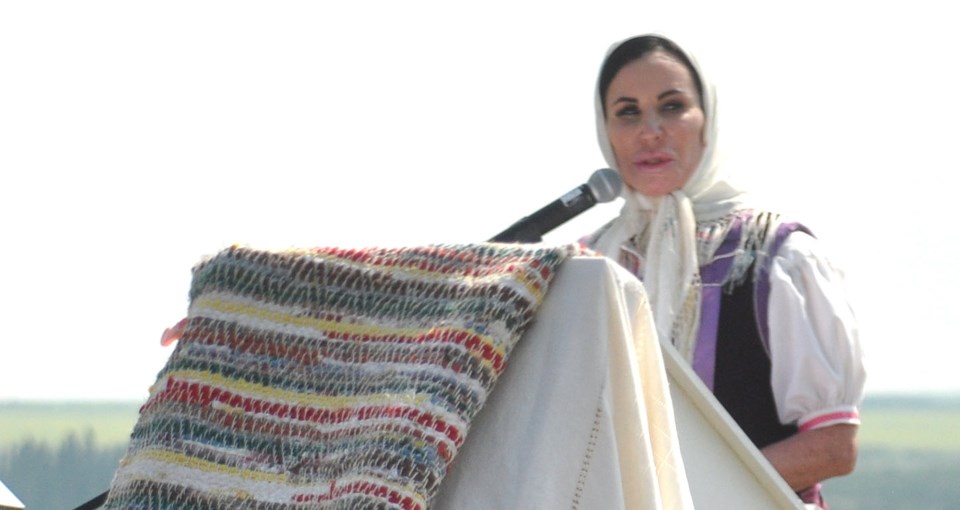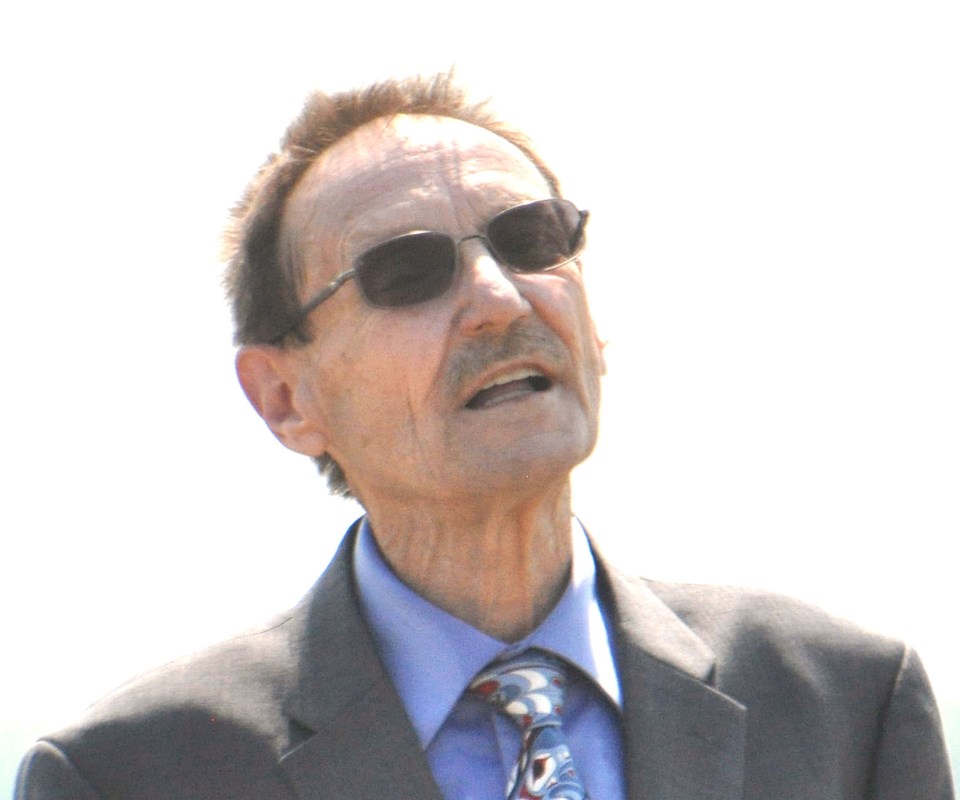On Oct. 29, 1924, as a CPR train wound its way through British Columbia’s Monashee Mountains in the Kettle Valley, a massive explosion ripped through car 1586 killing charismatic Doukhobor leader Peter Vasilievich Verigin.
Sixty-five-year-old Verigin’s companion Mary Strelaeff, 17, and seven others were killed. Eleven people were injured.
Many theories abound about Verigin’s alleged murder.
The majority of Doukobors believe the government arranged Verigin’s death.
“Suspicion has always been on the government,” said Blaine Lake resident and Doukhobor historian Brenda Cheveldayoff. “Doukhobor people believe that theory.”

In fact, on Nov. 5, 1924, Verigin’s widow, Anastasia F. Holubova and Christian Community of Universal Brotherhood (CCUB) members of B.C. sent an open letter to the government accusing them of being responsible for Verigin’s death.
“Our opinion that you have destroyed Mr. Verigin with intention to squelch the Community,” read the letter, which is in the Selkirk College Special Collections.
The Doukhobor’s communal way of life had posed a threat to North American capitalism. Verigin united more than 5,000 Doukhobors and postponed their assimilation into newly colonized Canada. Under his leadership they had 60 Russian villages in Saskatchewan and Alberta, numerous commercial brick factories, 80 two-story houses in the B.C. Interior, as well as flourmills, sawmills, orchards, and mixed grain and cattle farms.

The government, however, pointed the finger back at the Doukobors blaming them for Verigin’s death.
Another theory claimed that the explosion was meant for Grand Forks Conservative MLA John McKie who was on his way to attend the first session of the Legislature in Victoria. McKie's death gave the Liberals a majority of one over a united opposition, reported the Vancouver Province in October 1924.
In the 1960s, the RCMP tried proving a theory that Verigin’s son, Peter Petrovich, killed him. In 1963, the RCMP concluded there was no evidence to confirm or disprove this theory.
Other theories assert the Bolsheviks in Russia did it because Verigin was criticizing them. Some say the U.S. Ku Klux Klan killed Verigin because they feared he would bring his entire commune there after he purchased 800 acres in Oregon.
Peter ‘Lordly’ Verigin’s great-great-grandson J.J. Verigin said he and his organization have been unable to obtain full disclosure from all available police and CPR reports.
“Unfortunately, we have been told that no records exist and the ones that were available were either misplaced or no longer available.
“That’s why, when that kind of thing happens, it leads to all kinds of conspiracy theories ranging from members of his family to the KKK and everything in between,” he added.
This lack of full disclosure means the family and the Doukhobor organization has never had closure in their leader’s death, said J. J. Verigin.
“It’s important for the historic record,” he said. “If we are not capable of looking at our history with honest clear eyes, if we can’t come to terms with our past, how are we supposed to deal with our future?”
The explosion
The Vancouver Sun reported that Canadian Pacific Railway officials believed a person caused the explosion.
“Dispatches from Nelson state that police officials there are convinced that some explosive was placed in the day coach, and are investigating rumours that it was a plot to destroy the Doukhobor leader,” reported the Sun in 1924. “That the explosive was highly powerful was evidenced by the fact that every person in the coach, which burned up, was either killed or injured.”
According to the Kootenay Museum Association archives, Engineer William Harkness, of Engine 582, Train No. 11, said in a statement to police in October 1924, “Just inside the west mile board at Farron about 24.57k I heard a very heavy explosion, the emergency brakes automatically set, we were running about 20 miles an hour at the time, and I would say that we stopped in about three coach lengths. I looked back and saw a coach on fire, I reversed the engine, set up independent brake, and the fireman and myself went back and assisted to get the passengers out of the burning coach. We both worked together with the other members of the train crew, doing all we could to help. While I was in the burning coach I distinctly heard a number of small explosions that sounded like dynamite caps or small cartridges exploding.”
There is speculation that two unidentified men boarded the train during a stop in Castlegar and left behind two suitcases beside Verigin, which may have been a bomb.
In Library and Archives Canada there is a June 19, 1931, B.C. Police Report on a statement from CPR Locomotive Engineer Archibald Joseph Blaney.
“While the train was stopped at Castlegar Station two Doukhobor men entered the day coach carrying two grips, or suitcases, which they placed close to Mr. Verigin…these men then engaged in a short conversation with Mr. Verigin, then shook hands, wished him good luck and left the train, leaving the grips or suitcases in the car… I left the train on its arrival at Farron, and a little after train pulled out from Farron I heard a tremendous explosion."
Explosion deliberate
The Castlegar Doukhobor Discovery Centre said the death of Peter 'Lordly' Verigin was deliberate but no proof has ever surfaced. The provincial government of the time even offered a $2,000 reward for information leading to an arrest and conviction but the case remains unsolved.
Verigin’s legacy survives
On July 3, the Doukhobor Dugout House National Historic Site of Canada south of Blaine Lake officially opened keeping Verigin’s memory alive as well as the question, “Who murdered Peter The Lordly Verigin?”

Saskatchewan’s Lieutenant Governor Russ Mirasty officially opened the heritage site. Other dignitaries present included MP Kelly Block, MLA Todd Goudy, Saskatchewan Heritage Foundation Chairperson Margaret Huntington, and B.C. resident J.J. Verigin, the great-great-grandson of Peter The Lordly Verigin.
In the early 1900s, Peter ‘Lordly’ Verigin regularly stayed at the Doukhobor settlements in Blaine Lake, Saskatoon and southern Saskatchewan.
Story updated July 6 5:18 p.m. to include comments from J.J. Verigin.





